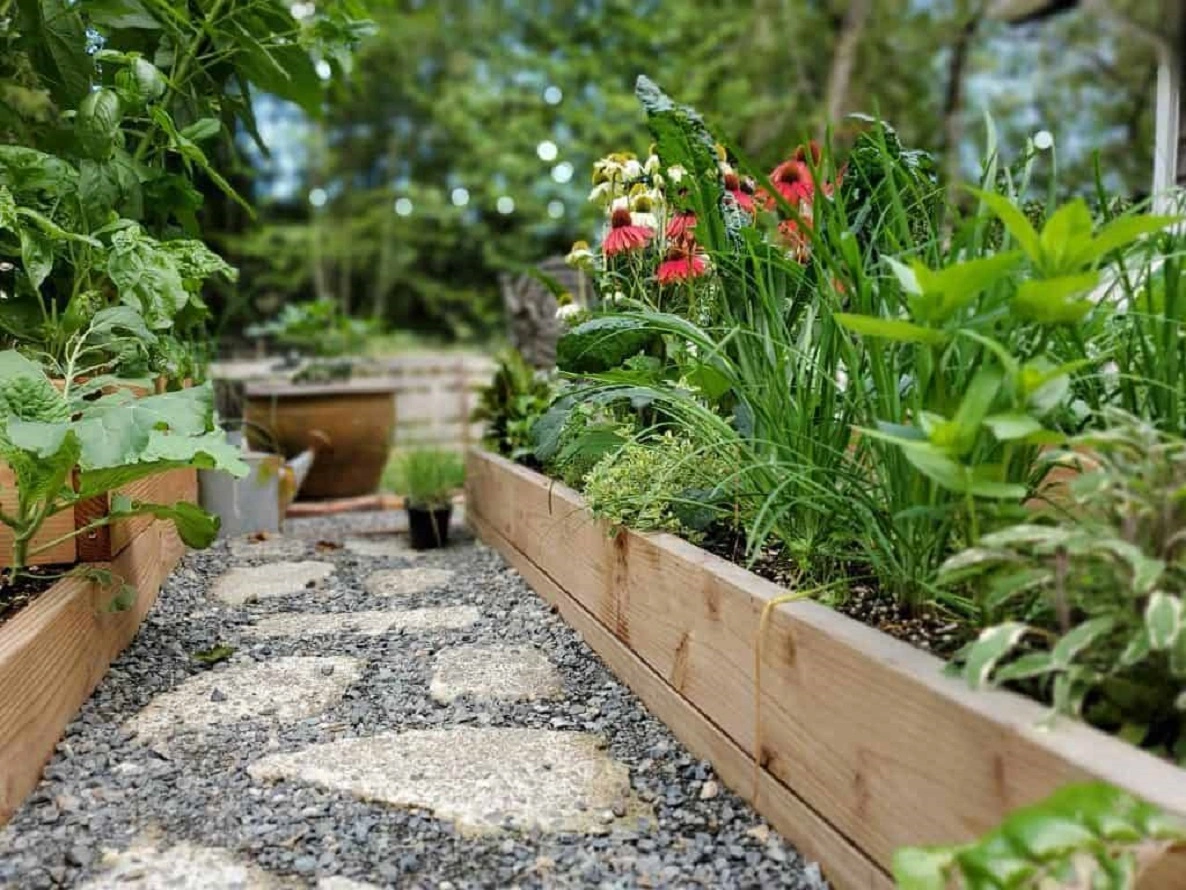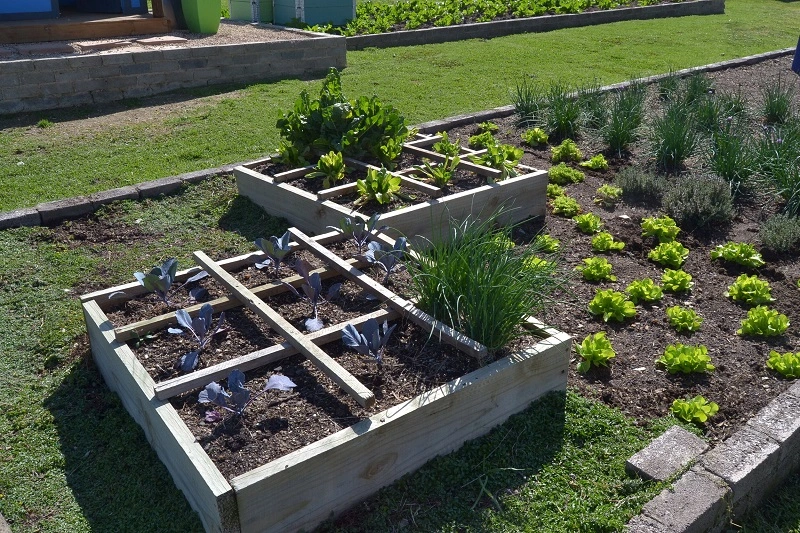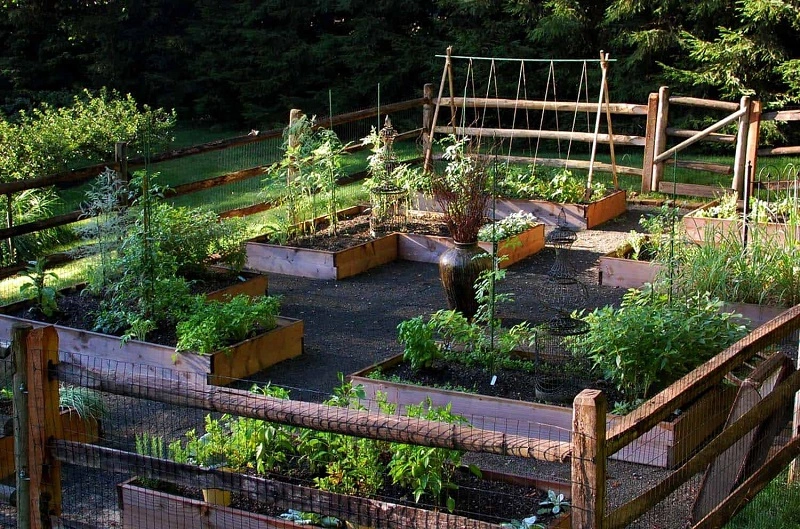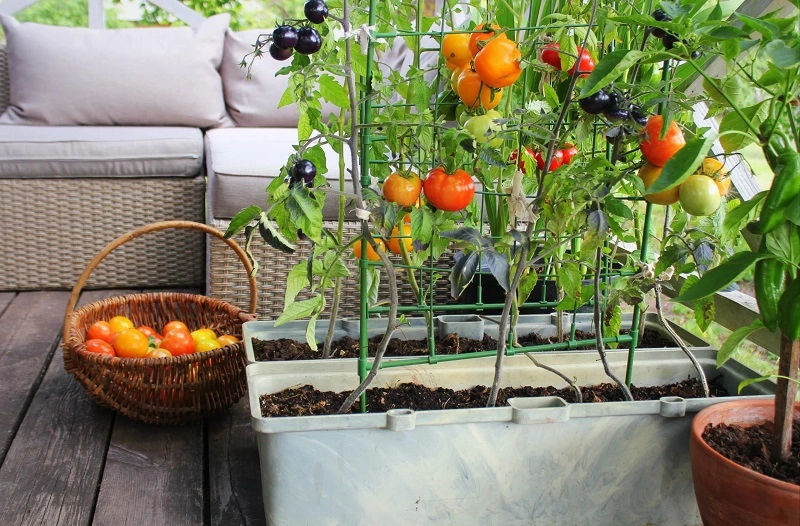4 Ideas para Huertos - Aprenda Cómo Empezar un Jardín de Hortalizas
¿Tienes espacio en tu jardín? Deberías plantearte cultivar tus propias verduras. Gracias a ello, puedes estar seguro de que los alimentos que consumes están libres de fertilizantes nocivos y otras sustancias tóxicas. Hay muchas ideas sobre cómo empezar un huerto. ¿Qué elegir: un huerto tradicional en el suelo o un huerto elevado? Consulta las ideas más interesantes.

¿Por qué merece la pena tener un huerto?
Un huerto aporta muchos beneficios. Si decides cultivar tus propias cosechas, puedes estar seguro de que las verduras y frutas que cosechas son saludables. No tienes esa certeza cuando compras en los supermercados, donde los productos típicos han sido rociados con diversos productos químicos.
Las verduras, frutas y hierbas orgánicas de tu propio huerto son especialmente beneficiosas si tienes niños pequeños y quieres saber lo que comen.
He aquí una ventaja adicional de tener un pequeño huerto: más ejercicio diario. Los cultivos necesitan deshierbe y riego, y gracias a esto, usted puede trabajar en su hermosa forma.

¿Se puede cultivar un huerto en cualquier jardín?
Se puede crear un huerto en cualquier jardín, independientemente de su tamaño. El número de verduras o hierbas que se cultiven en él es la única limitación. Cuanto más grande sea la propiedad, más posibilidades sobre las plantas puedes tener.
Pero resulta que incluso el poco espacio en un patio, o la falta del mismo no es un problema en absoluto. Cada vez son más las personas que deciden iniciar un huerto en un balcón o un patio.
Huerto para principiantes
Los que nunca han cultivado hortalizas deberían empezar por los cultivos más fáciles. ¿Te preguntas qué plantas son las mejores, en este caso? Echa un vistazo a éstas:
- Lechuga,
- rábano,
- calabacín,
- eneldo,
- cebollino,
- perejil,
- judías verdes,
- calabazas,
- zanahorias.
Después de adquirir un mínimo de experiencia, puedes decidir cultivar hortalizas como pepinos, tomates o rúcula. Aunque no son muy exigentes, requieren algo de tiempo y cuidados adecuados.

Además, puedes ampliar tu huerto y añadirle algunas frutas. Aunque mucha gente afirma que son más difíciles de cultivar, puedes probar a elegir especies menos exigentes. Aquí tienes algunas buenas sugerencias:
- grosella roja,
- grosella espinosa,
- vid,
- frambuesa.
Huerto - plantas acompañantes
Al iniciar un huerto, asegúrate de seguir ciertas reglas sobre cómo distribuir determinadas especies. ¿Por qué es tan importante? Porque algunas plantas pueden entorpecer el crecimiento de las demás cuando se plantan una al lado de la otra. Del mismo modo, otras tienen una influencia positiva en el desarrollo mutuo. Pero no siempre es tan sencillo como parece. Echa un vistazo a los siguientes consejos y aprende a agrupar varias hortalizas.
- Plantar zanahorias y cebollas en hileras adyacentes - gracias a esto, puedes protegerlas de las plagas.
- Los tomates y las coles plantados juntos combaten los insectos atacantes.
- Para proteger las judías verdes o los guisantes, planta algo de maíz cerca.
El ajo es un ejemplo perfecto de hortaliza que puede plantarse junto a cualquier especie. Repele eficazmente la mayoría de las plagas. La albahaca y la menta plantadas entre los cultivos realzan el sabor de las hortalizas.

He aquí otras combinaciones populares de plantas acompañantes en un huerto:
- apio, col y remolacha,
- tomates y perejil,
- zanahorias y lechuga,
- pepinos y eneldo,
- judías verdes y calabazas.
Algunas hortalizas no se pueden cultivar juntas. Por ejemplo, nunca hay que plantar juntos tomates y guisantes, o pepinos y patatas. Otras parejas de hortalizas prohibidas son:
- judías y cebollas
- patatas y tomates,
- tomates e hinojo,
- judías verdes y guisantes.
Un pequeño huerto para principiantes
¿Acaba de empezar su aventura con la horticultura? Para saber si es algo para ti, empieza por un mini huerto. No necesitas nada excesivo. Sólo 3-4 filas con las verduras más fáciles es más que suficiente.
Como ventaja, un huerto en miniatura de este tipo requiere poco trabajo, y se puede diseñar en cualquier - incluso la propiedad más pequeña. Es una solución perfecta si usted vive en un apartamento con un pequeño patio. Se puede convertir una superficie de 1 m² en un pequeño huerto.

Un huerto moderno
Hay tantas ideas de huertos como jardineros. Las soluciones modernas se están convirtiendo en un elemento cada vez más popular en los patios de muchas casas. No hay nada raro en ello. Todo el mundo quiere que su huerto encaje con el aspecto general del edificio u otros elementos del paisaje.
Se puede diseñar un huerto moderno de muchas maneras. Los mini-invernaderos son una solución interesante. Tales construcciones minúsculas proporcionan las condiciones perfectas para el crecimiento de las plantas, por lo que puedes decidirte por verduras y frutas más exigentes. Además, estas construcciones tienen un aspecto realmente fascinante y constituyen una decoración perfecta para el jardín.
En cuanto a los patios pequeños, el uso de palés con cajas de plantas largas colocadas encima es una solución muy moderna. No todas las hortalizas pueden cultivarse en estas condiciones, pero las hierbas pueden ser una opción perfecta.

Un huerto elevado en cajas
Es una solución perfecta, especialmente para quienes no tienen un jardín, pero pueden sacrificar algo de espacio en un patio o un balcón. En cuanto a las cajas, puedes hacerlas o comprarlas en un centro de jardinería. Hay una gran variedad de productos de este tipo, por lo que todo el mundo debería encontrar algo ideal para sus necesidades.
Estas camas elevadas no sólo son adecuadas para las hierbas, como algunos podrían pensar. Son ideales para muchos tipos de verduras. Se pueden utilizar para plantar patatas, tomates, lechugas o puerros. Si la caja es lo suficientemente grande, también puede plantar remolachas o calabacines en ellos.

Un pequeño huerto en un balcón
En cuanto a los huertos en el balcón, las construcciones verticales son la tendencia actual. Se trata simplemente de un estante de varios niveles. Cada nivel puede contener diferentes verduras, frutas o hierbas. Estos estantes están disponibles en diferentes tamaños, lo que los hace perfectos incluso para balcones muy pequeños. Es más, algunas personas que no tienen balcón, deciden colocar estos estantes en el interior, si el espacio en, por ejemplo, la cocina lo permite.

📍 ¿Cómo separar un huerto del resto del jardín?
No es necesario que separes completamente tu huerto, pero si quieres hacerlo a pesar de todo, hay algunos métodos. Uno de ellos consiste en utilizar una valla de madera - su altura es cuestión de preferencia. Una malla es otra opción. Mucha gente utiliza arbustos en forma de seto para dividir varias secciones del jardín.
📍 ¿Cómo hacer un huerto?
Un huerto se puede hacer de varias maneras - dependiendo de su concepto individual. Las clásicas hileras con verduras y frutas son una buena idea. Otra opción es un invernadero. También puedes montar un huerto en cajas especiales.
📍 ¿Cuándo plantar verduras en un huerto?
La mayoría de las hortalizas se siembran o plantan en primavera, algunas ya en marzo (sobre todo las hortalizas de raíz). Otras plantas comestibles tienen que esperar hasta mayo o junio. Es entonces cuando puedes sembrar calabacines y pepinos, o plantar coliflores.
📍 ¿Cómo diseñar un huerto?
El diseño de un huerto no es tan fácil de planificar como parece. En primer lugar, hay que determinar la zona donde va a estar. Además, tienes que pensar qué hortalizas quieres cultivar, ya que no todas se pueden plantar juntas. Crear un huerto es un proceso logístico. Asegúrate de seguir algunos consejos de los expertos.
Artículos destacados




